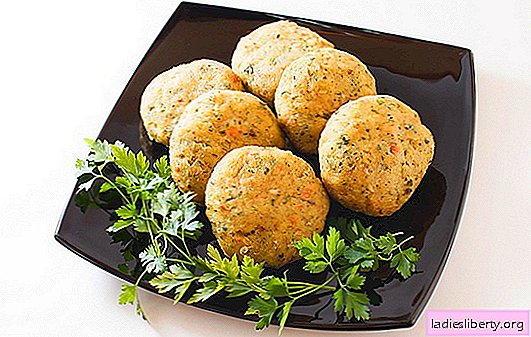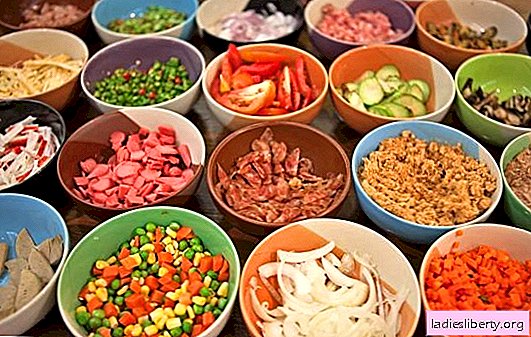
Very often, beginner gardeners and gardeners try to get rid of grass in the beds and in the aisles by any means. However, experienced summer residents are not in a hurry to weed it, but on the contrary, they even sow it. Why is this needed?
What is the purpose of sowing grass between rows
It turns out that sodding of the soil with herbs increases its fertility, prevents drying out, improves air balance. It also solves the dirt problem. The site looks aesthetically pleasing at any time of the year.
So, in order to deal with weeds on the site, you do not need to constantly run with a hoe and use herbicides that have a negative effect on the structure of the soil. The soil can be sodded, that is, sow useful perennial grasses. This option is suitable for those who do not have an abundance of mulching material.
But these are far from all the benefits of sodding. The grass on the paths needs to be mowed several times during the season, it turns out free organic fertilizer and mulch for beds.
Attention! It is better to pave the central paths with a brick or wild stone; grass can be trampled from frequent use.
If we compare grass-free paths with soddy paths, then the latter have a clear advantage. During rain, only the topsoil gets wet on uncovered areas of the soil, therefore, moisture evaporates more actively from such tracks. While sod soil has a porous structure, water penetrates into its deep layers. The soil does not dry out, breathes, does not crust. In the southern regions of the country this is necessary, otherwise all cultivated plants simply burn out.
Sodding has a positive effect on fruit crops; plant roots do not compete with each other, as they occur at different depths. The root system of lawn grass is located superficially.
Features of sowing grass between rows
Today on sale there is a different lawn grass and its mixtures, which can be used in the garden and orchard. However, you need to choose the right culture for the neighborhood.
The soil under apple trees, plums and pears can be sown with grass of any height and type. It is not necessary to mow it if the lower branches of the tree are high above the ground.
Felt cherries also get along well with any grass, but be sure to mow the aisles. During the season 2 mowings
Berry bushes, for example, gooseberries, currants and raspberries, do not tolerate neighborhood with tall herbs. Under them, it is better to sow undersized mixtures. Aisles require regular mowing.
In dwarf apple trees and other fruit trees grafted onto a semi-dwarf rootstock root system is located in the upper layer of the soil, so the aisles are closed with perennial dressers.
When choosing a mixture of grass for planting, you need to pay attention to what area it is intended for. On sale there are seeds for dry and wet soils, for open and shaded areas, not requiring mowing and others.
Which grass is more suitable for sodding
For planting in the garden, trampling resistant mixtures are more suitable. Most commonly used:
- red fescue;
- ryegrass;
- meadow fescue;
- bluegrass meadow.
Ryegrass it’s easier to find, and the seeds are inexpensive, but the grass is not durable, you will often have to reseed. Meadow fescue develops well, but its seedlings are unfriendly, the path is clogged with weeds.
A mixture of creeping clover, which cleans the area of wireworm, is suitable for fruit crops. However, the grass does not tolerate drought and wears out quickly.
In the aisles of the beds, you can sow a thin field pole. It forms a low and dense bush, resistant to trampling, does not require frequent watering. But the Polevosnaya shoot is good for the garden. It does not require additional mowing, the height of its bush is not more than 10 cm. Growing, the plant protects the roots of trees from low temperatures in winter. The polevole is suitable for any soil, but it is especially good to use it on heavy soil. She loosens it and makes it porous.
Attention! For sodding, timothy seeds, beefless rind, cane fescue, lupine, alfalfa are not suitable. They quickly outgrow and look unattractive, the root system of plants lies too deep, can become a competitor for garden crops.
How to sow grass in the row-spacings: timing and maintenance of turf
The best time for sowing the aisles in the garden and the vegetable garden is spring. The soil is carefully dug up, the rhizomes of weeds are removed. The site is leveled with a rake and proceed to sowing. You can use the finished mixture or make it yourself. To do this, mix the seeds of fescue, clover and bluegrass. Most of the mixture should be fescue seeds. For sodding 10 square meters. m. area will require 2-3 g of clover and bluegrass, 6 g of fescue.
After sowing, the grass in the aisles needs care. Before seedlings appear, the site is well watered. Further watering is not necessary if there is enough natural rainfall. In drought, the lawn is irrigated additionally. When the grass grows a little, it is surely fed with nitrogen fertilizers. They are brought in in the first half of summer.
To keep the turf neat, the tracks need to be mowed. The mowing frequency is determined from personal preference and grass growth rate.
In addition, it is important to remember that the grass for sodding grows with rhizomes and easily passes to the loose soil of the beds. This must not be allowed. Paths need to be enclosed with improvised material or a border tape.
When the grass in the tree-trunk circles has become rare, needs to be replaced, then it is not worth it to uproot, so as not to harm the roots. To go from sodding to black steam, in the spring you need to add 100 g of nitroammophoska per 1 sq. m. By the fall of the turf there will be no trace, the plant mass will completely decompose. After this, a shallow loosening of the soil is carried out.











